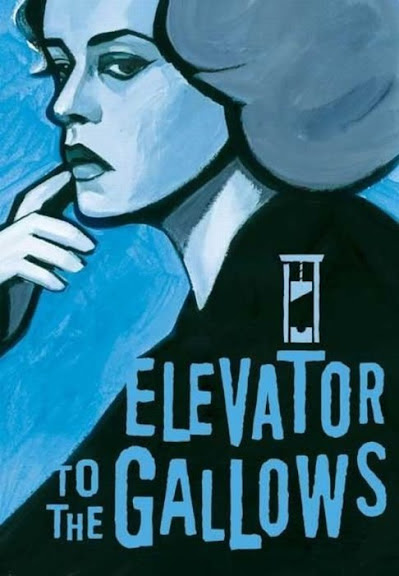
Elevator to the Gallows is as well crafted a film as you'd expect from a veteran filmmaker, and this being Louis Malle's first outing as a director makes the film that much more amazing. Add Henri Decaë's ultra-modern noir Paris as Jean Moreau's backdrop, and layer in Miles Davis's slithery soundscape, and it becomes just too fucking much (pardon my French). This is such a great film. Everything fits like the pieces of a good alibi.
From Terrence Rafferty:
François Truffaut once wrote, “All of Louis Malle, all his good qualities and faults, was in Elevator to the Gallows”—a statement that, even given French film criticism’s traditionally high tolerance for the counterintuitive, pretty unambiguously qualifies as, well, false. What’s most striking about Elevator to the Gallows, in fact, is that Malle, having made this almost insolently proficient Série noire thriller, never went anywhere near the genre again, and for the rest of his career rarely displayed much interest in the sort of tightly controlled visual and narrative style he uses with such mastery here. It would be more accurate, I think, to say that “all of Louis Malle” is all that is not in Elevator to the Gallows—or, for that matter, in any individual Malle movie—but is, rather, what lies in the spaces between his films, in the habit of renunciation that required him, it seems, to turn his back immediately on whatever he had just accomplished.
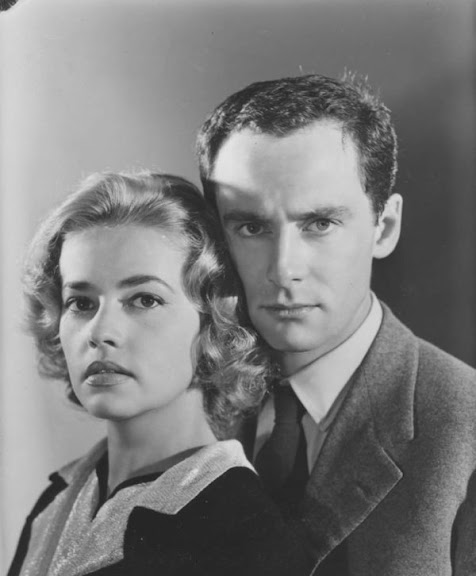
To put it another way: Malle spent the four decades of his filmmaking life saying, “Been there, done that,” over and over again, searching constantly for somewhere he hadn’t been and something he hadn’t done. From the chilly elegance of Elevator to the Gallows, in 1957, he moved quickly to the humid romanticism of The Lovers (1958) and then to the frenetic zaniness of Zazie dans le métro (1960). Next came A Very Private Affair, in 1962, a caustic film à clef about and with Brigitte Bardot, which was followed immediately by the melancholic, Fitzgerald-like The Fire Within (1963), the movie that was the occasion of Truffaut’s rather desperate attempt to fit the director’s already bewilderingly diverse body of work into an off-the-rack auteurist suit.
The best way to look at Elevator to the Gallows, it seems to me, is as an anomaly—as the first in the long series of anomalies that was Louis Malle’s career. The uniqueness of Elevator to the Gallows is that it is the only Malle film designed purely as a genre exercise, the only one in which execution seems more important to him than process. He was all of twenty-five when the movie came out, and it’s clear that he was testing himself, the way a young poet might flex his or her muscles with a conventional form like the sonnet. The screenplay, adapted by Malle and Roger Nimier from an undistinguished novel by Noël Calef, is a fairly straightforward murder-gone-wrong story: more elaborate than most, perhaps, but still characterized by the sort of swiftness and brutal linearity that thriller audiences expect.

An adulterous couple, Florence Carala (Jeanne Moreau) and Julien Tavernier (Maurice Ronet), kill her husband (Jean Wall), a middle-aged grand-fromage businessman, and do not get away with it, because, as is so often the case in thrillers, fate is seriously not on their side. The murder, which takes place in the first few minutes of the film, has obviously been lovingly planned, and Julien, who works for the inconvenient husband in a high-rise Paris office building, does the deed briskly, just before quitting time. But he forgets a potentially incriminating piece of evidence—sacrebleu!—and before he can retrieve it gets himself trapped in the elevator, in the now utterly deserted building. As if this were not misfortune enough, his getaway car, a snazzy little convertible, is stolen by a couple of brainless kids named Véronique (Yori Bertin) and Louis (Georges Poujouly), who go joyriding in the country, eventually stopping at a hilariously futuristic motel, where they register as Mr. and Mrs. Julien Tavernier and do something very, very criminal. Florence and Julien must have been born under the same sign as Albert King: if it wasn’t for bad luck, they wouldn’t have no luck at all.
Florence, waiting for word from her lover, is quietly frantic. (Frantic was, in fact, what the film was called for its first American release, in 1961.) She wanders the lamp-lit streets of Paris searching for him, often to the accompaniment of the sinuous, evocative jazz of Miles Davis, who, playing with a group that included the brilliant bop drummer Kenny Clarke and three Frenchmen picked up on the fly, recorded the score in a single session. (That impromptu session has since acquired a certain historic significance as an early instance of Davis’s interest in the modal approach to jazz composition—the approach that culminated, less than two years later, in the classic album Kind of Blue.) These nighttime sequences, voluptuously photographed by Henri Decaë, are the movie’s most original and memorable passages, the moments at which you can feel, faintly but unmistakably, the stirrings of something young and fresh straining at the boundaries of the thriller form, like a baby kicking in the womb.
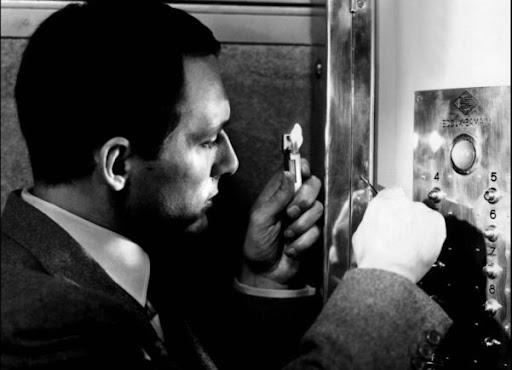
The new wave doesn’t quite get born in Elevator to the Gallows, but it’s clearly in the late term here, more than ready to emerge. You can sense it in Decaë’s remarkably daring natural-light cinematography (which he would soon be putting to good use for Truffaut and Claude Chabrol as well); in the funky ebullience of young bit players like Jean-Claude Brialy and Charles Denner, both destined to become new wave luminaries; and, most of all, in the unleashing of Jeanne Moreau, who, nearing thirty, was a busy actress but never quite a star until Malle turned her loose in the nocturnal city and did justice, for the first time, to that amazing, imperious, gravelly sexy walk of hers—which would, over the next couple of decades, come to seem the defining movement of the new wave, the embodied rhythm of freedom.
Malle later said of Elevator to the Gallows, “I showed a Paris not of the future but at least a modern city, a world already dehumanized,” a statement that, I think, serves as a useful description of the film itself: not of the future but at least modern. Some of that modernity is on the surface—in the “automated” paraphernalia of the office and the motel, in the glass-and-concrete boxiness of the Carala building, in the sleekness of Julien’s sports car and suit. What’s most deeply modern about the film, though, is an undertone of war weariness and general cynicism, which is most evident in the character of Julien, a veteran of France’s recent wars in Indochina and Algeria. Ronet, who doesn’t have much dialogue, is the very picture of postcolonial tristesse: all haunted eyes and uselessly correct bearing. (He would employ these same resources, and several more, in his indelible portrayal of a suicide in The Fire Within.) And it’s probably not an accident that Malle gave the role of the anomic punk Louis to Poujouly, a young actor best known for playing one of the death-obsessed children in René Clément’s great 1952 antiwar film Forbidden Games.
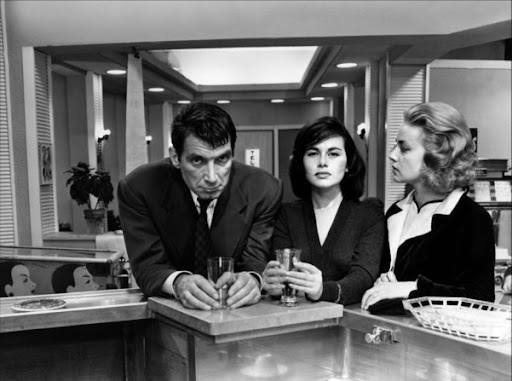
These characters are not, however, the sort of complex, rounded, infinitely surprising people that Malle would explore with such exhilarating curiosity in films like Murmur of the Heart (1971), Lacombe, Lucien (1974), Atlantic City (1980), and Vanya on 42nd Street (1994). Florence and Julien and the rest are all essentially working parts of a thriller machine, and whatever nuance Malle gives them is just a little oil to keep them from clanking too loudly. The film’s beauty lies in its economy, in its formal rigor (Malle once said that he was torn between Robert Bresson and Alfred Hitchcock, and both influences are apparent here), and in the sly, nearly absurdist humor of the cascading coincidences that doom the homicidal protagonists.
And although nowhere close to all of Louis Malle is present in Elevator to the Gallows, the movie does supply a nice ironic metaphor for his unique, bravely eclectic career. This terrific thriller is about the horror of being stuck, trapped, unable to move: that is, about the stasis this filmmaker devoted the rest of his life, and the best of his art, to avoiding.
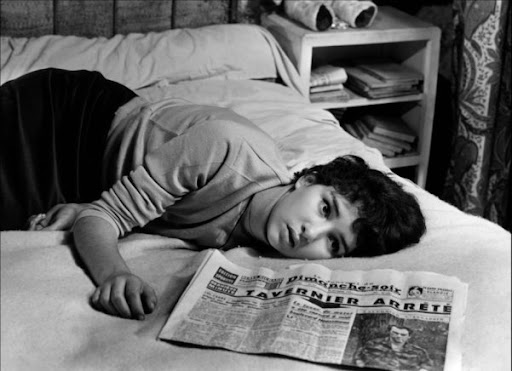
Technical Information:
Title: Ascenseur pour l'échafaud/Elevator to the Gallows
Year: 1957
Country: France
Director: Louis Malle
Source: DVD9 Retail
Video Codec: 480p-x264
Container: .mkv
Size: 4.04 GB
Length: 1:31:29
Programs used: DVD Decrypter, JoinVob, SubRip, RipBot
Resolution: 720x432
Aspect Ratio: 16:9
Video: MPEG4 H264 @ 6144 kb/s
Frame Rate: 29.97 fps
Audio: Dolby AC3 mono French @ 192 kb/s
Subtitles: English
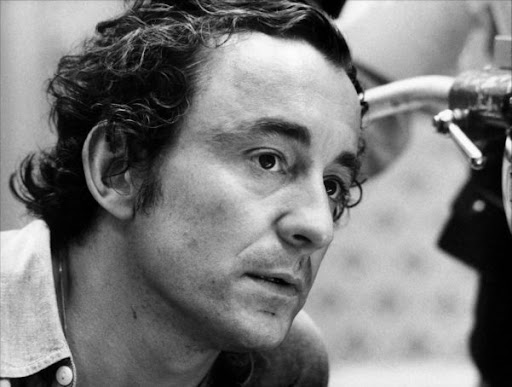
(Our prefered x264 player is Media Player Classic.)
(Use JDownloader to automate downloading)
Elevator to the Gallows Megaupload Links


